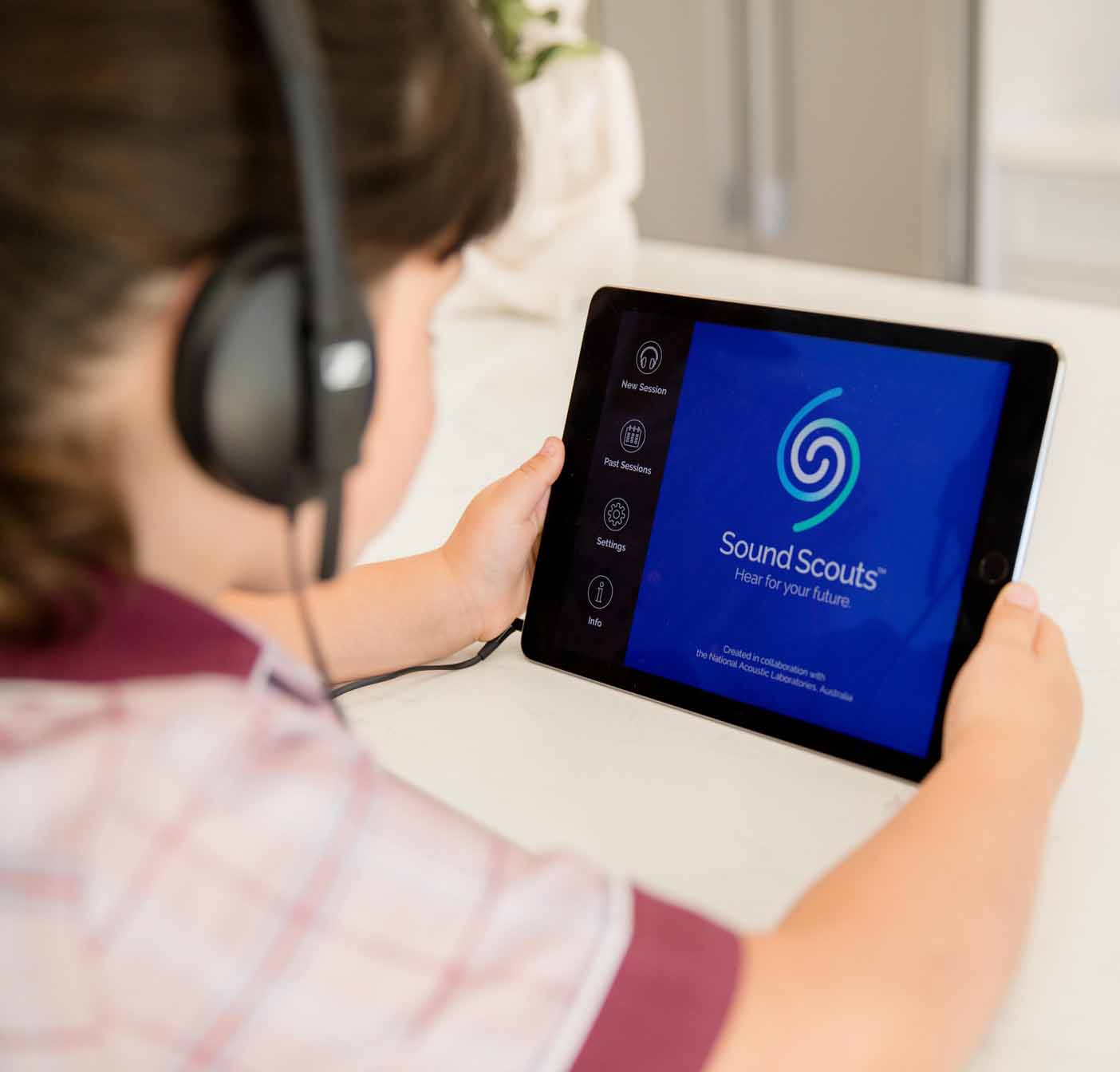Evidence
Published Science
The science of Sound Scouts has been published in the International Journal of Audiology; “Hearing tests are just child’s play: the Sound Scouts game for children entering school”
Objective: To create a hearing test useable without the involvement of a clinician or calibrated equipment, suitable for children aged 5 or older.
Design: The tablet-based app (Sound Scouts) includes tests of speech in quiet, speech in noise and tones in noise, all embedded in game designed to maintain engagement. Data was collected to intelligibility-equalize the stimuli, establish normative performance, and evaluate the sensitivity with which Sound Scouts detected known hearing problems and identified their type.
Study sample: Participants were children from age 5 to 14 (394 with normal hearing, 97 with previously identified hearing loss) and 50 adults with normal hearing.
Results: With pass-fail criteria set such that 98% of children with normal hearing passed Sound Scouts, 85% of children with hearing loss failed Sound Scouts (after exclusion of children in either group who received an inconclusive result or had incomplete results). No child with four-frequency average hearing thresholds of 30 dB HL or greater in their poorer ear passed Sound Scouts. Hearing >loss type was correctly identified in only two-thirds of those cases where the algorithm attempted to identify a single type of loss.

Conclusions: Sound Scouts has specificity and sensitivity sufficiently high to provide hearing screening around the time children typically enter school.
Other Publications
"111 children (8.84%) presented with evidence of middle/outer ear pathologies. 21 children (1.67%) had hearing loss in at least one ear. 30 children (2.52%) were diagnosed with spatial processing disorder. False positive rate was 5.01%, indicating that a relatively small proportion of the children who failed the screenings were subsequently shown to have normal auditory function."
"Acceptable threshold differences of ≤5 dB between AutoAud and manual audiometry hearing thresholds were found for 88% of thresholds, with a greater agreement for older than for younger children. Consistent pass/fail results on the Sound Scouts speech-in-quiet measure and manual audiometry were found for 81% of children. Consistent pass/fail results on the Sound Scouts speech-in-noise measure and LiSN-S high-cue condition were found for 73% of children."
"It was estimated that Sound Scouts would result in an average incremental cost of A$316 and an average incremental increase in quality adjusted life years (QALYs) of 0.07. This resulted in an ICER of around A$4,472 per QALY gained, which is likely to be considered ‘cost-effective’. The cost-effectiveness acceptability curve indicated that screening with Sound Scouts has a 95% probability of being cost-effective using a threshold of A$60,000 per QALY."
